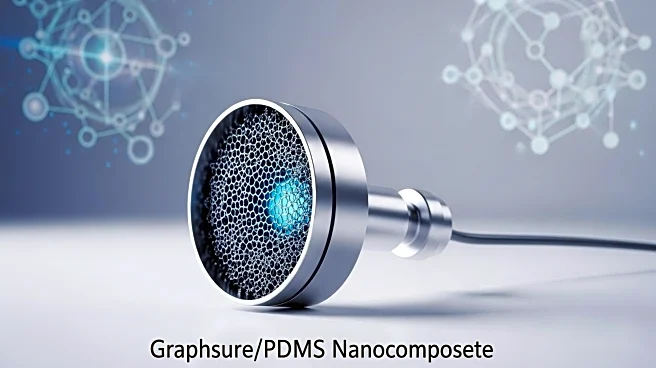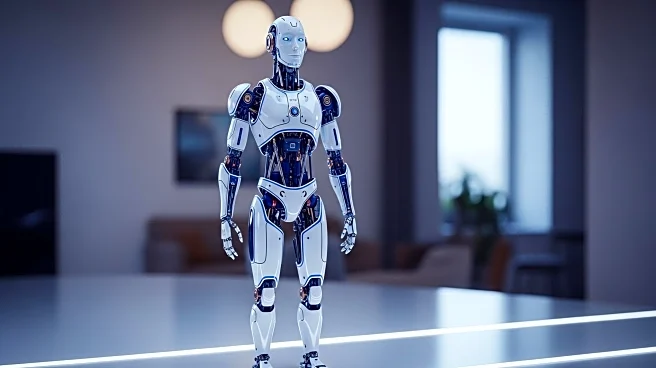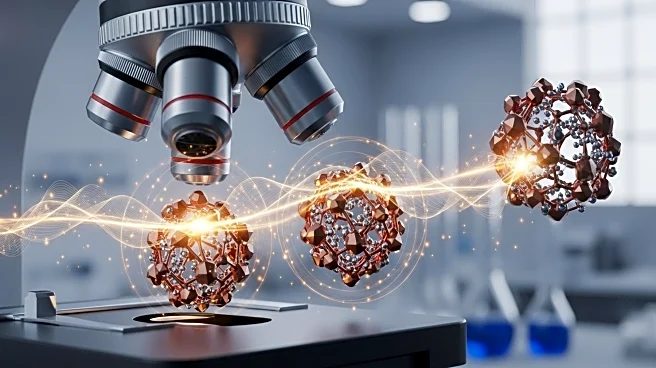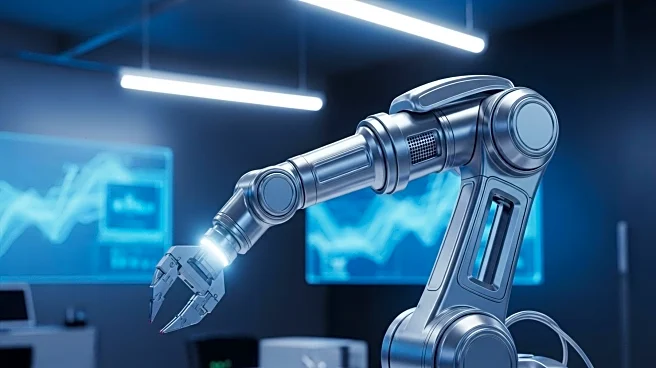What's Happening?
Researchers at North Carolina State University have developed a polymer structure resembling a 'Chinese lantern' that can transform into various three-dimensional forms when compressed or twisted. This transformation is controlled remotely using a magnetic field, offering potential applications in robotics and mechanical metamaterials. The structure is created from a thin polymer sheet cut into a diamond-shaped parallelogram, with parallel ribbons connected by solid strips. When the ends of these strips are joined, the sheet folds into a lantern-like shape. The structure is bistable, meaning it has two stable forms: the lantern shape and a spinning-top shape. The researchers have also added magnetic control by attaching a thin magnetic film to the bottom strip, allowing remote manipulation of the structure.
Why It's Important?
The development of this magnetic lantern structure is significant for the fields of robotics and mechanical metamaterials, as it introduces a new method for programmable shape creation and energy transformation. The ability to remotely control the structure's shape and stability using a magnetic field opens up possibilities for innovative applications, such as gentle magnetic grippers and flow-control filters. This advancement could lead to more efficient and versatile robotic systems, enhancing capabilities in various industries, including manufacturing and environmental monitoring. The research also contributes to the understanding of elastic energy storage and release, which is crucial for designing responsive and adaptive materials.
What's Next?
The researchers plan to explore the assembly of these lantern units into 2D and 3D architectures for broader applications in shape-morphing mechanical metamaterials and robotics. Future studies may focus on optimizing the design for specific applications, such as underwater exploration or medical devices. The team aims to further develop the mathematical model to predict the behavior of the lantern structure under different conditions, potentially leading to more precise control and customization of its properties.
Beyond the Headlines
This innovation highlights the intersection of materials science and robotics, showcasing how advancements in one field can drive progress in another. The ethical implications of using such technology in environmental applications, like non-invasive fish catching, could lead to more sustainable practices. Additionally, the research underscores the importance of interdisciplinary collaboration in solving complex engineering challenges.










